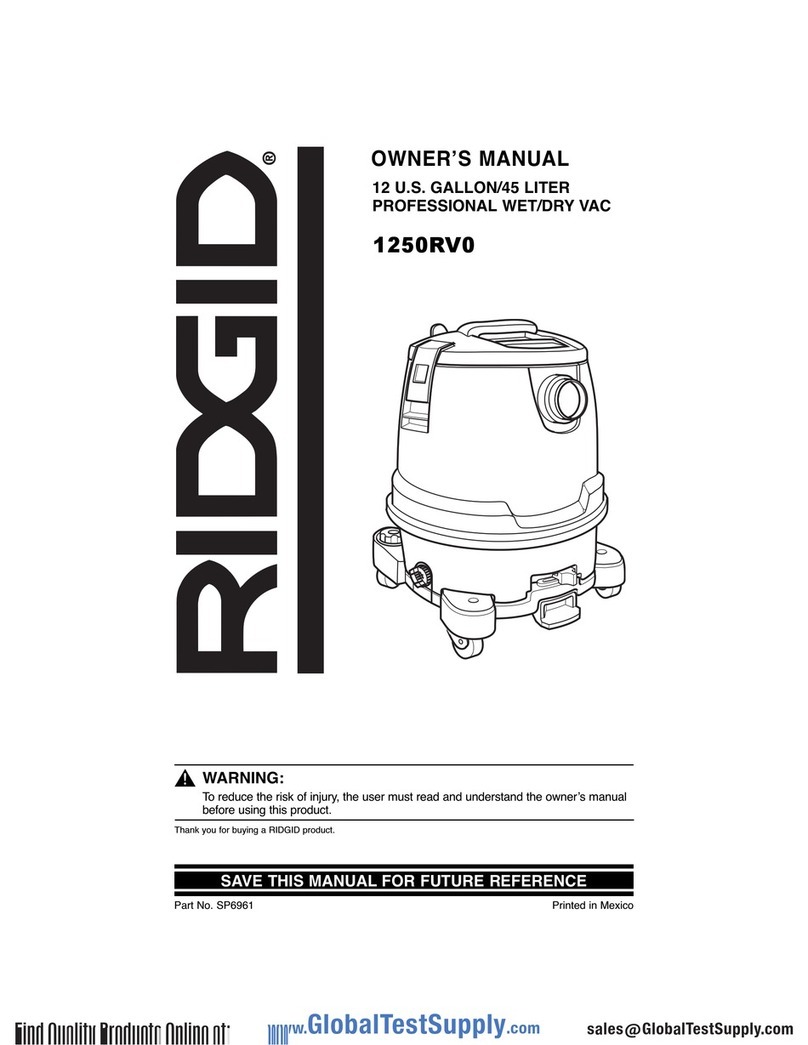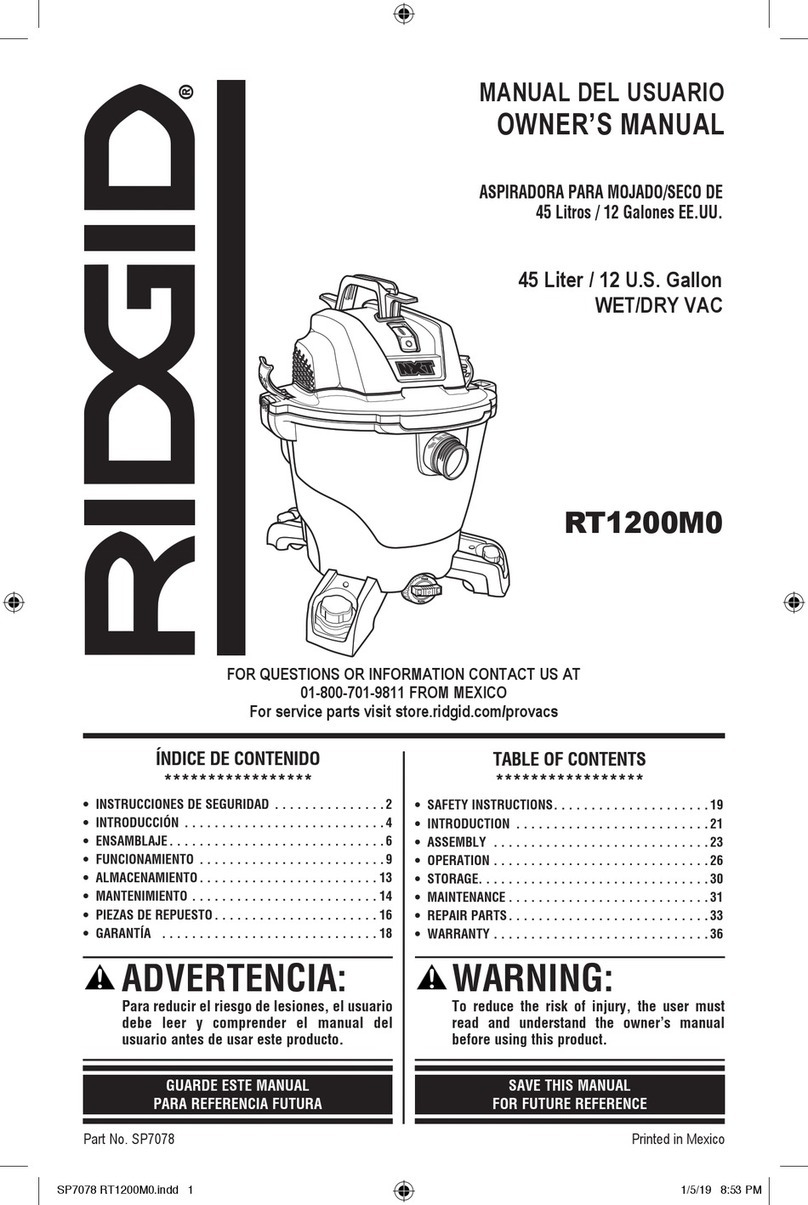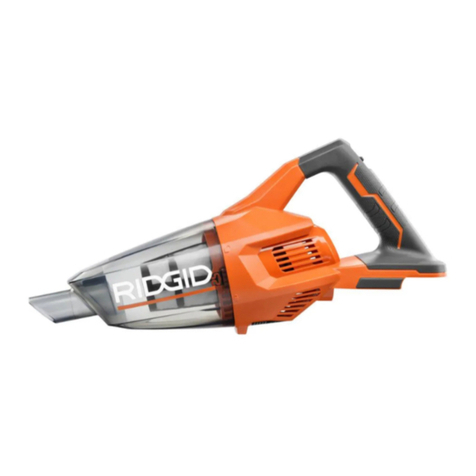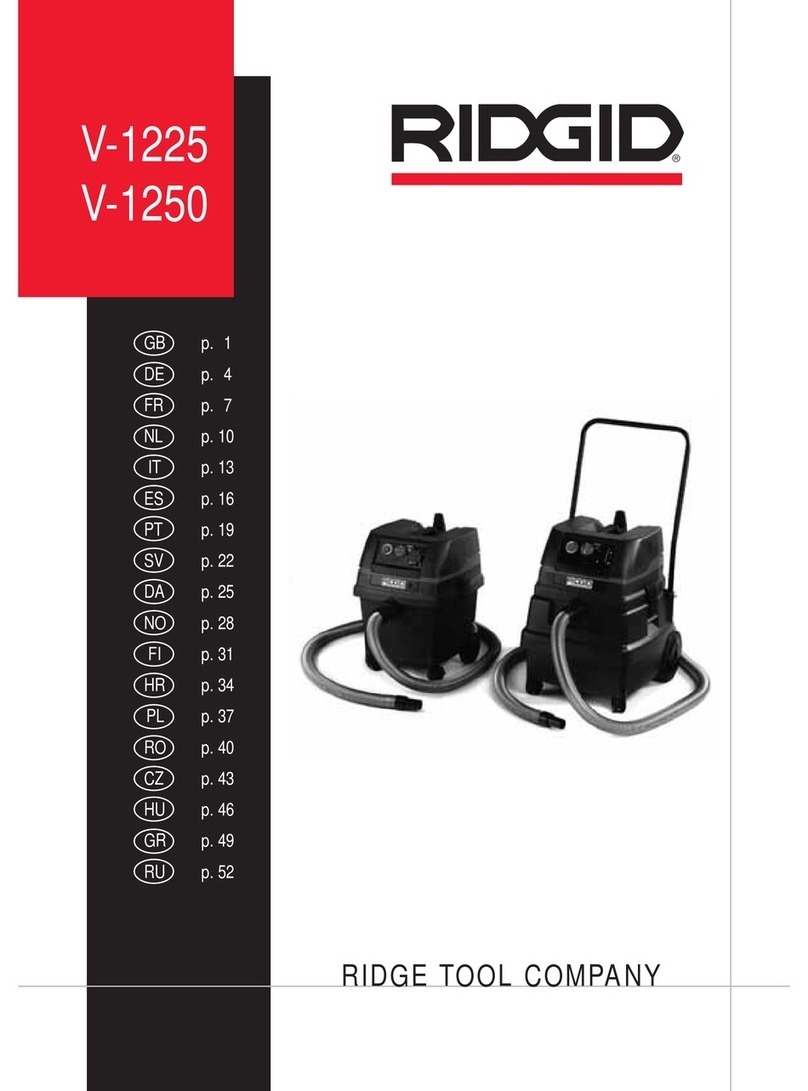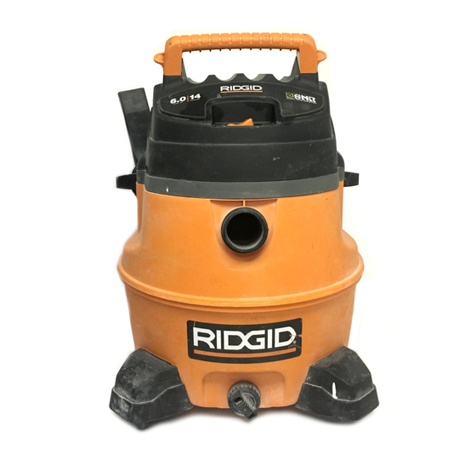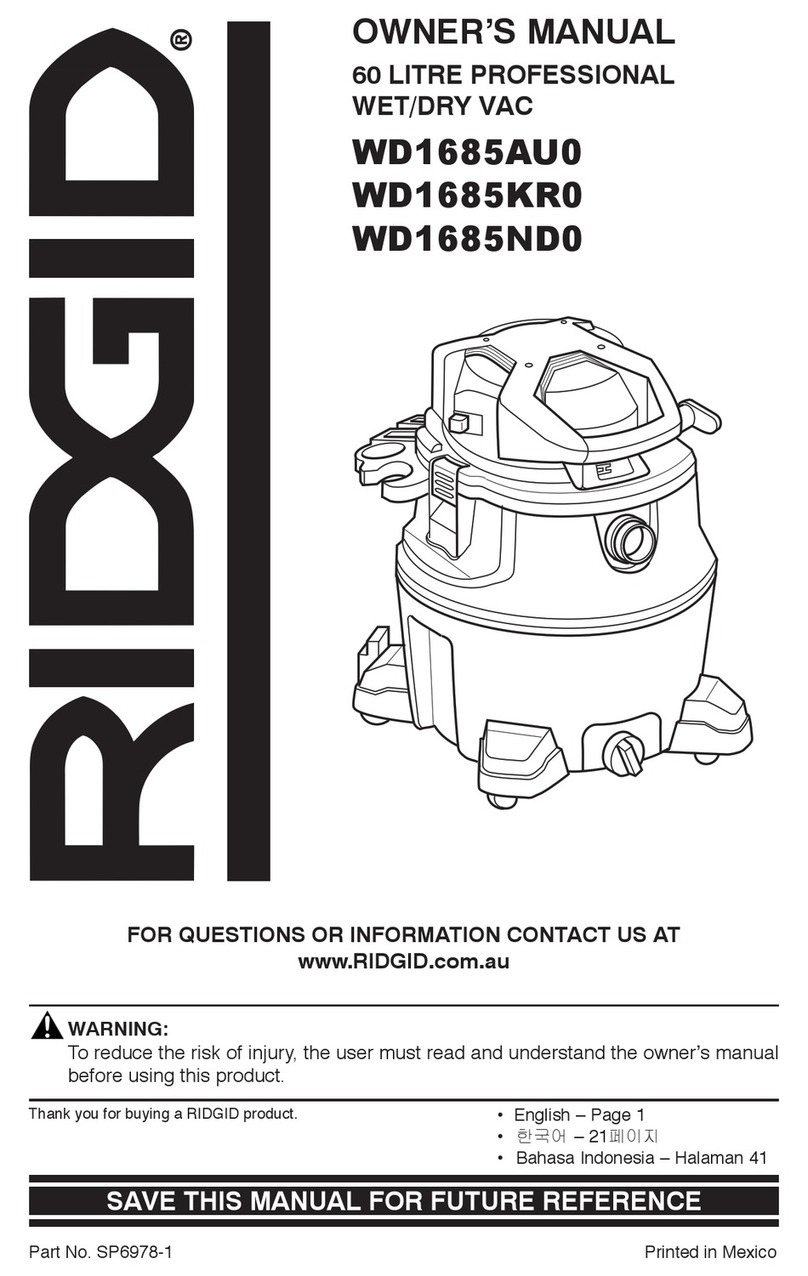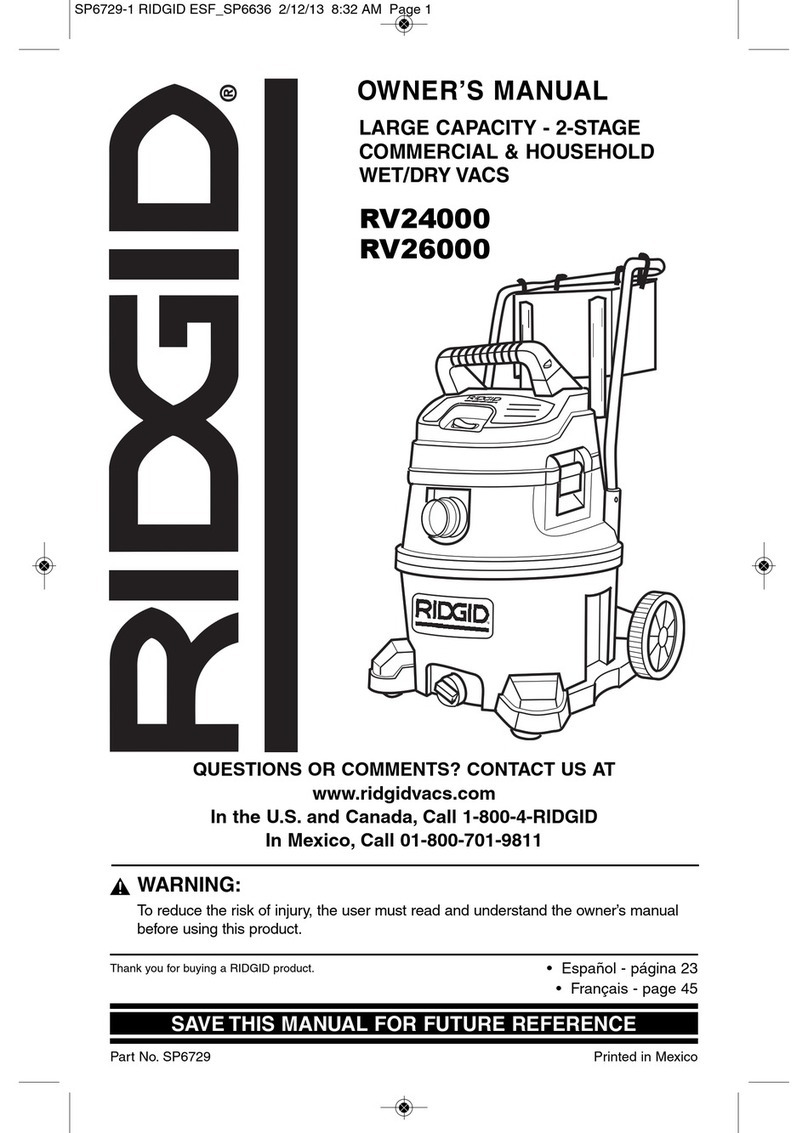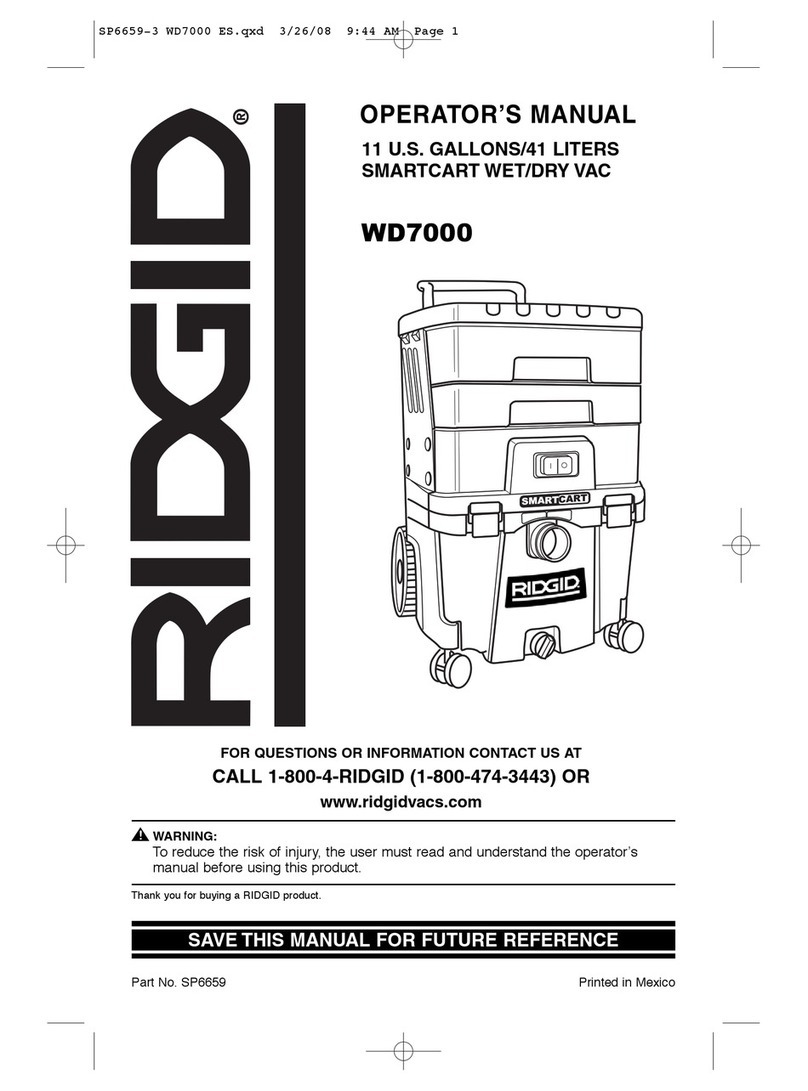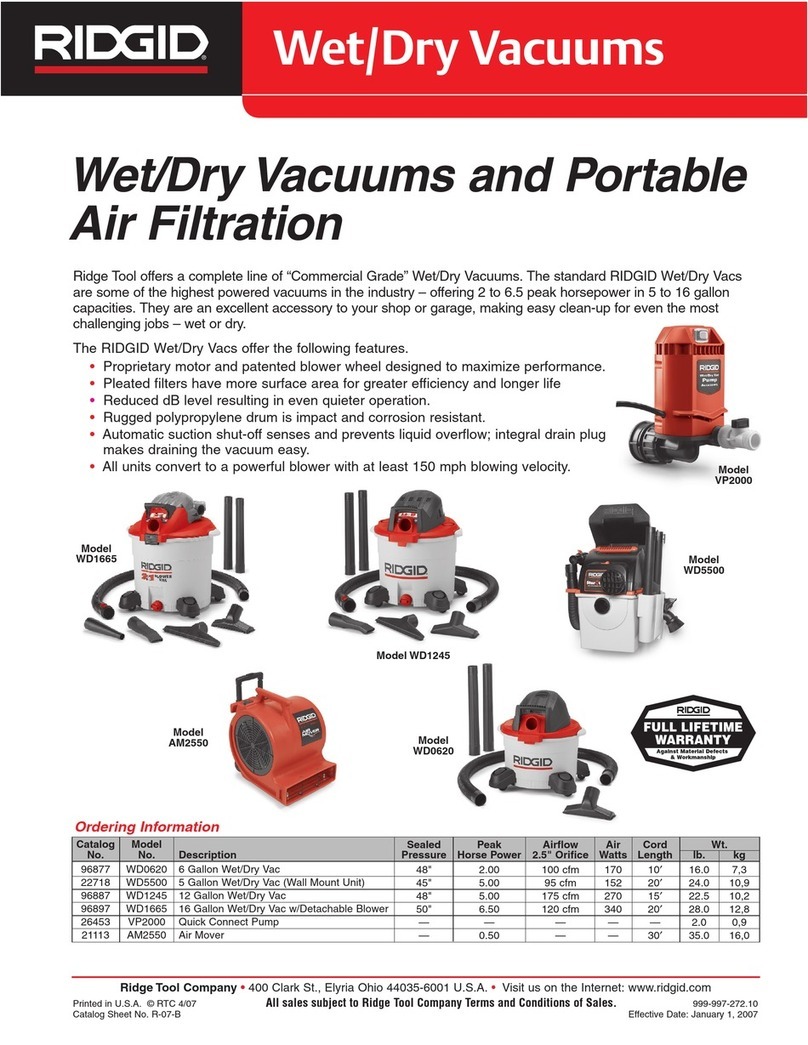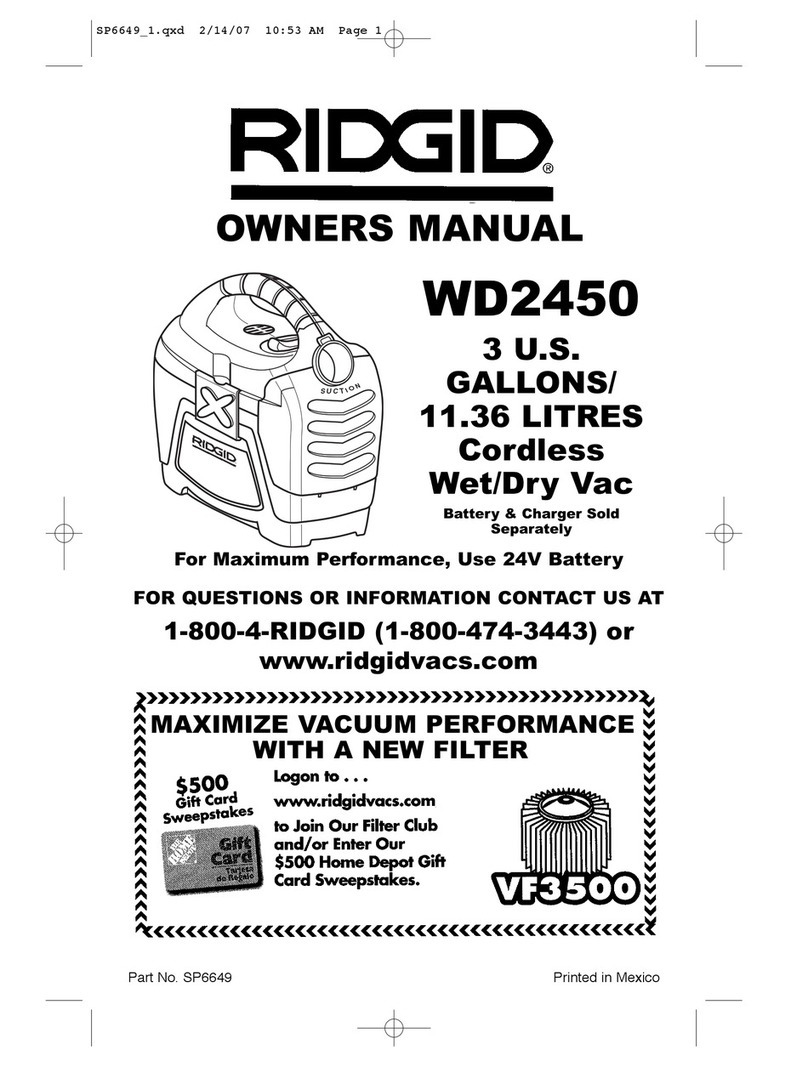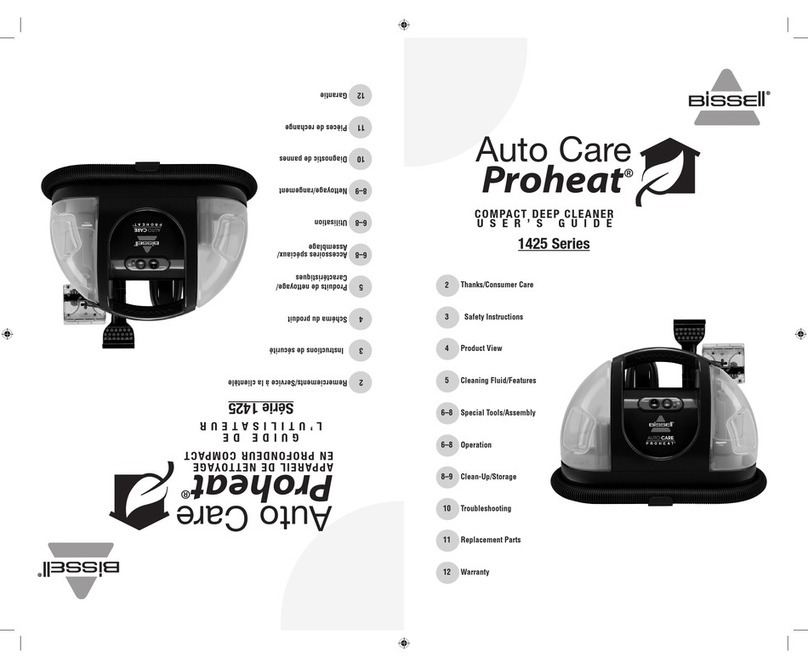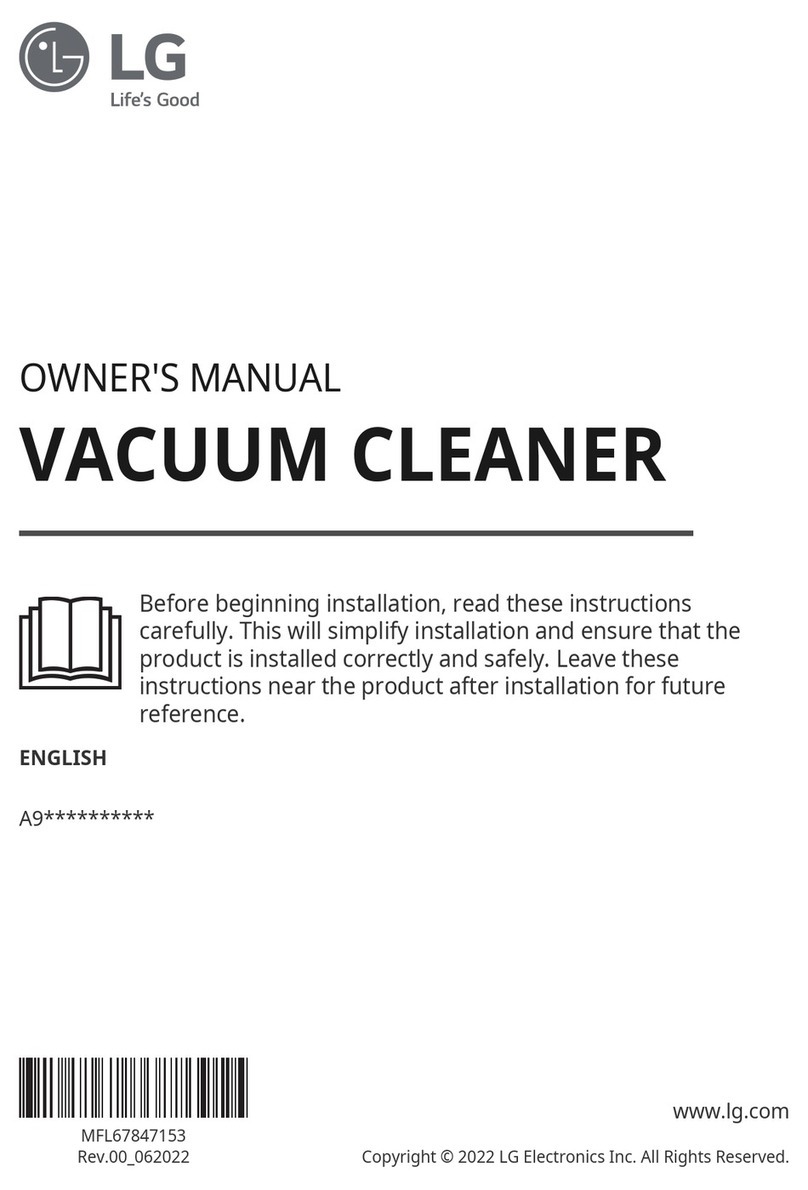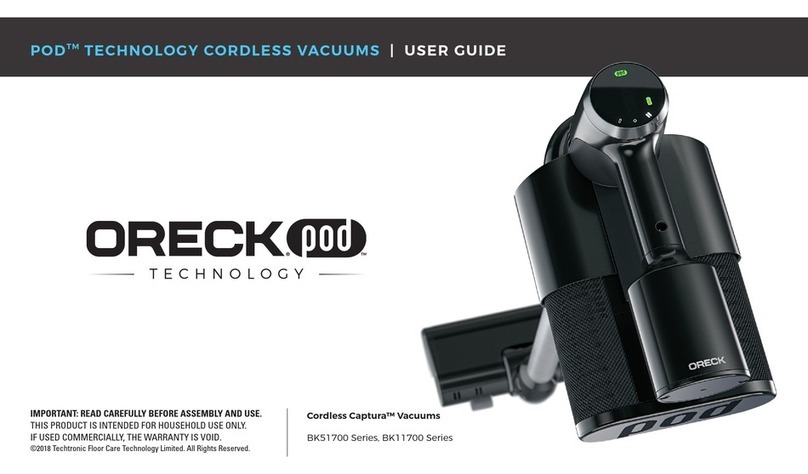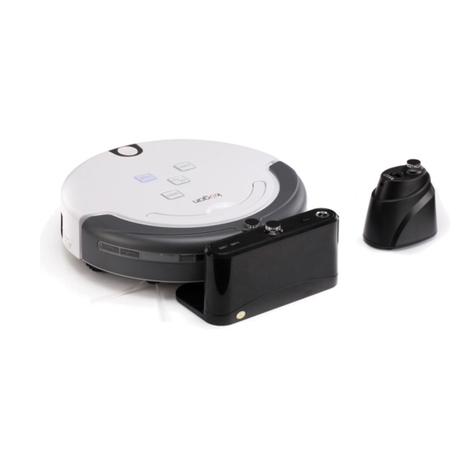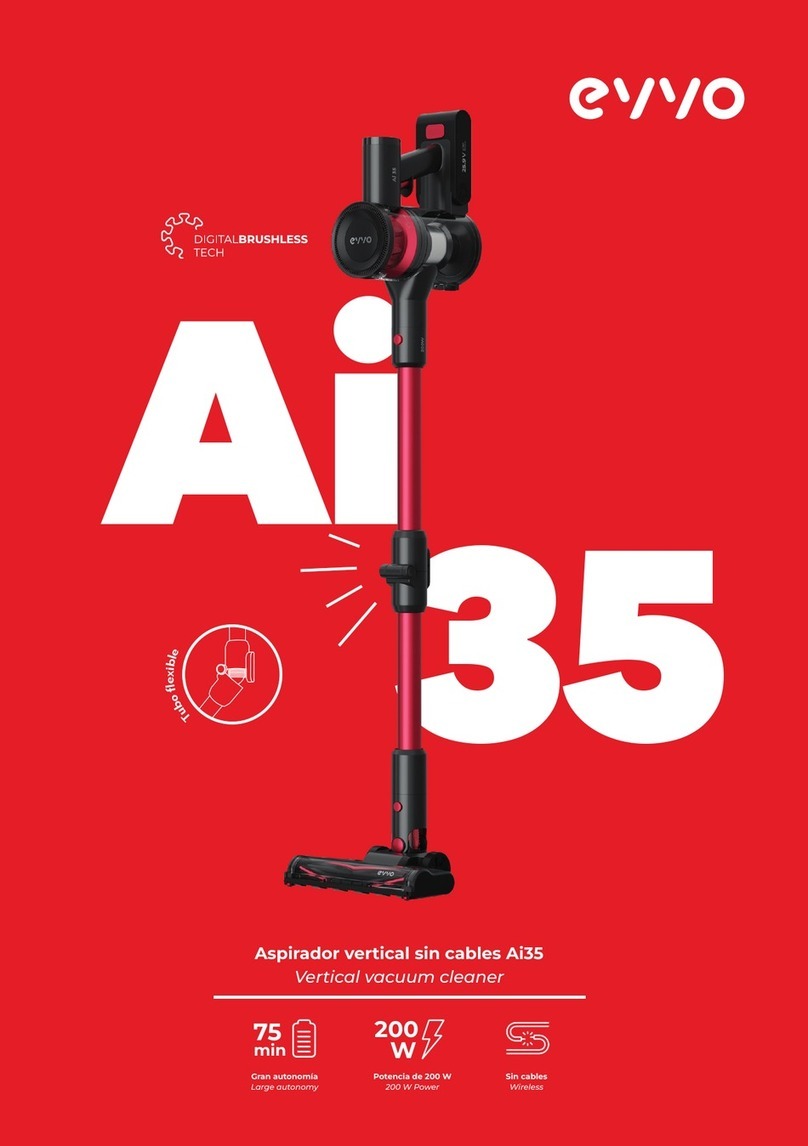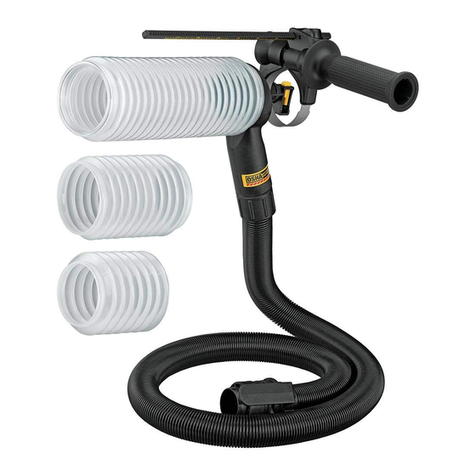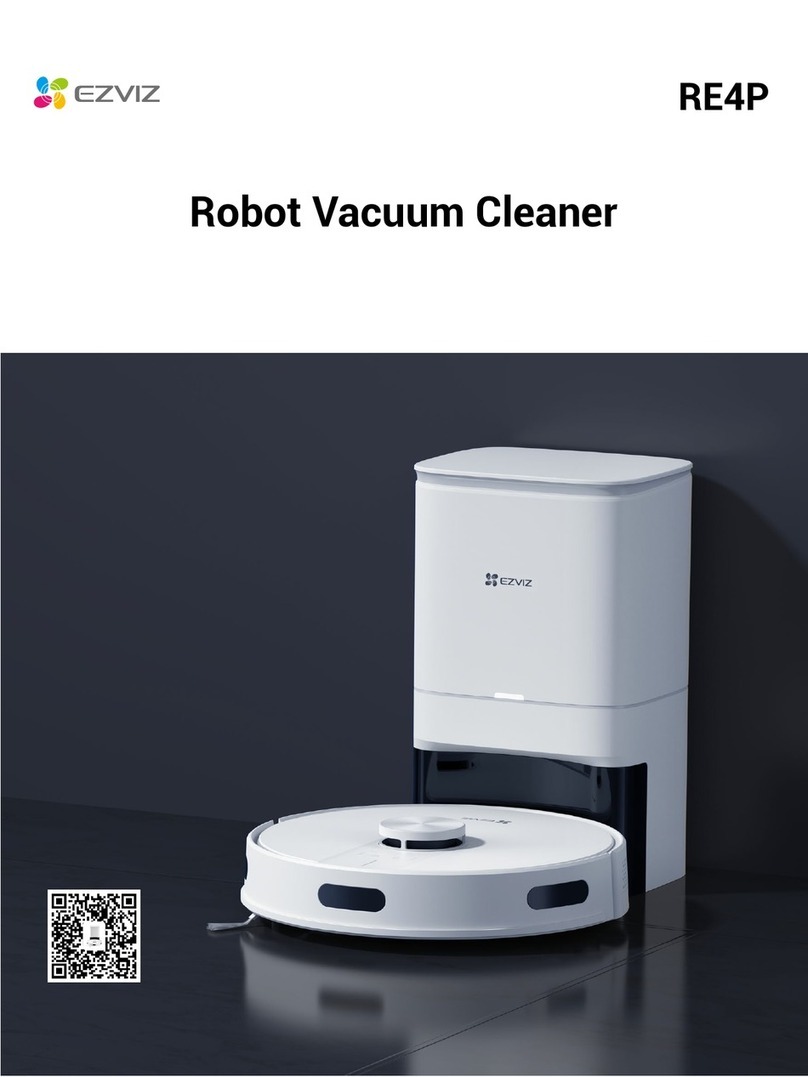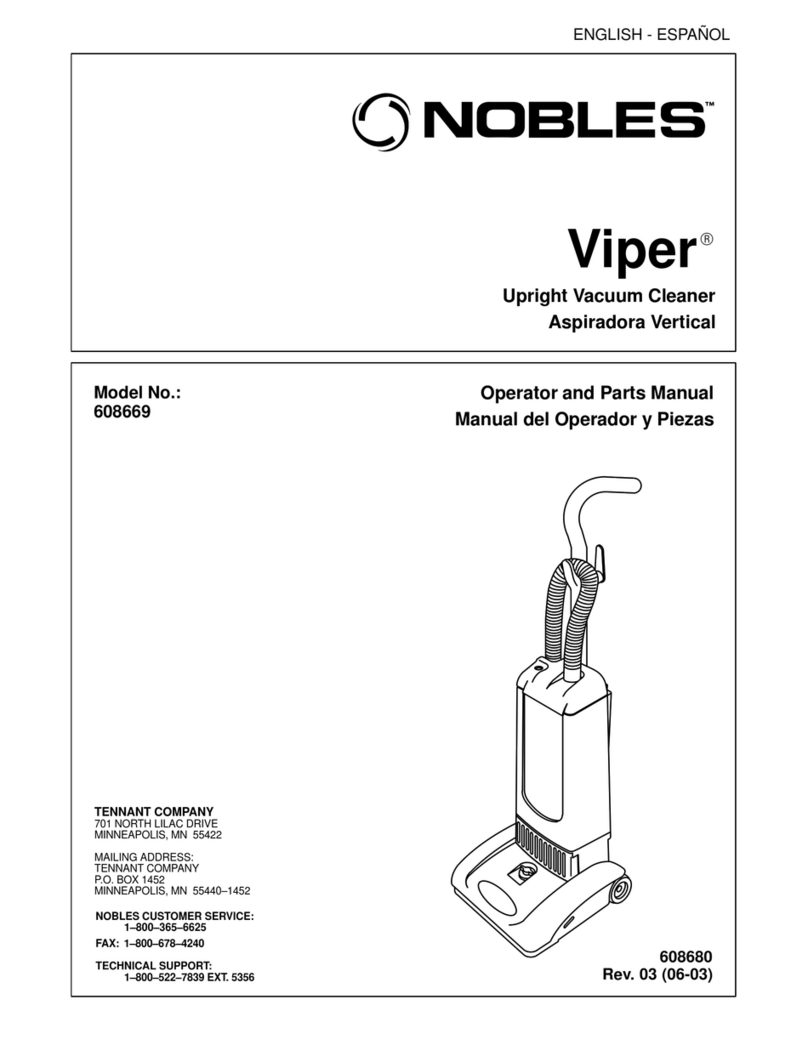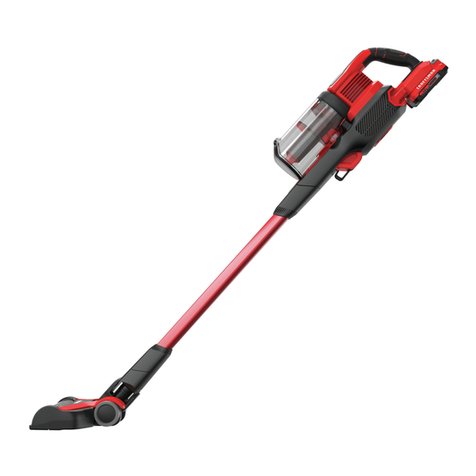
2
IMPORTANT SAFETY INSTRUCTIONS
Safety is a combination of using common
sense, staying alert, and knowing how your
Wet/Dry Vacuum Cleaner (“Vac”) works.
Safety Signal Words
DANGER: Indicates a hazardous
situation which, if not avoided, will result
in death or serious injury.
WARNING: Indicates a hazardous
situation which, if not avoided, could result
in death or serious injury.
CAUTION: Indicates a hazardous
situation which, if not avoided, could result
in minor or moderate injury.
When using your Vac, always follow basic
safety precautions including the following:
WARNING
- To reduce the risk of fire,
electric shock, or injury:
• Read and understand this manual and
all labels on the Wet/Dry Vac before
operating.
• Use only as described in this manual.
• Do not leave Vac running while
unattended - you may fail to notice
important signs indicating abnormal
operation such as loss of suction, debris/
liquid exiting exhaust, or abnormal
motor noises. Immediately stop using
Vac if you notice these signs.
• Do not leave Vac when plugged in.
Unplug from outlet when not in use and
before servicing.
• Sparks inside the motor can ignite
flammable vapors or dust. To reduce the
risk of fire or explosion, do not use near
combustible liquids, gases, or dusts,
such as gasoline or other fuels, lighter
fluid, cleaners, oil-based paints, natural
gas, coal dust, magnesium dust, grain
dust, aluminum dust, or gun powder.
• Do not vacuum anything that is burning
or smoking, such as cigarettes, matches,
or hot ashes.
• To avoid the risk of ignition of drum
debris, empty drum after each use.
Combustible materials, such as rags or
sawdust containing stain or urethane,
can be sources of such overheating.
!
!
!
!
• Do not vacuum drywall dust, cold
fireplace ash, or other fine dusts with
standard filter. These may pass through
the filter and be exhausted back into the
air. Use a fine dust filter instead.
• To reduce the risk of inhaling toxic
vapors, do not vacuum or use near toxic
or hazardous materials.
• To reduce the risk of electric shock,
do not expose to rain or allow liquid to
enter motor compartment. Store indoors.
• This Wet/Dry Vac is not intended for
use by persons (including children) with
reduced physical, sensory, or mental
capabilities, or lack of experience
and knowledge, unless they have
been given supervision or instruction
concerning use of the appliance by a
person responsible for their safety.
• Do not allow to be used as a toy. Close
attention is necessary when used by or
near children.
• Do not use with a torn filter or without
filter installed except when vacuuming
liquids as described in this manual.
Dry debris ingested by the impeller may
damage the motor or be exhausted into
the air.
• Turn off Vac before unplugging.
• To reduce the risk of injury from
accidental starting, unplug power cord
before changing or cleaning filter.
• Do not unplug by pulling on cord.
To unplug, grasp the plug, not the cord.
• Do not use with damaged cord, plug or
other parts. If your Vac is not working
as it should, has missing parts, has
been dropped, damaged, left outdoors,
or dropped into water, call customer
service.
• Do not pull or carry by cord, use cord
as handle, close a door on cord, or pull
cord around sharp edges or corners.
Do not run Vac over cord. Keep cord
away from heated surfaces.
• Do not handle plug, switch, or the Vac
with wet hands.
• Use only extension cords that are rated
for outdoor use. Extension cords in poor
condition or too small in wire size can
SP7063.indb 2 5/17/18 4:07 PM

